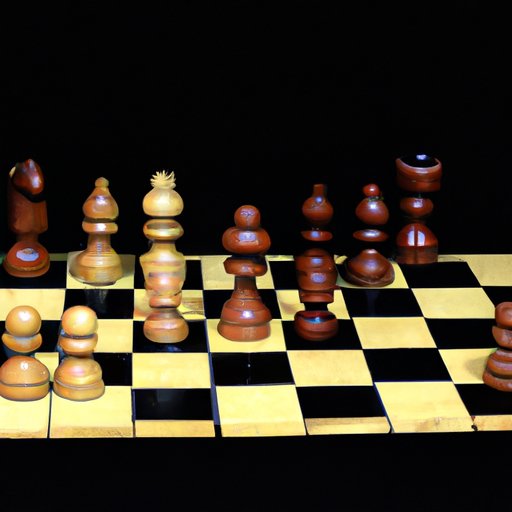
Introduction
Castling is a crucial move in chess that can be used defensively and offensively. It helps to protect the king and connect the rooks. In this article, we will explore the rules, strategies, and benefits of castling.
A Beginner’s Guide to Castling in Chess: Rules and Strategies
Castling is a move where the king and the rook on the same side of the board move simultaneously. The king moves two squares towards the rook and the rook moves to the square the king crossed. There are a few rules and conditions for castling that must be followed. For example, the king cannot castle through a square that is attacked by an opponent’s piece, nor can the king castle while in check. Beginners can benefit from castling defensively for safety and connecting the rooks for offensive strategies.
Mastering the Art of Castling: When and How to Use This Crucial Chess Move
Knowing when to castle is crucial to success in chess. Early castling can give a player a strong defensive lead, while late castling can allow for a strong attack on the opponent’s king. Additionally, opposite-side castling can lead to an attacking game, while same-side castling is more strategic and defensive. Castling can also be used to place the king in a better position for an attack or defense.
The Benefits of Castling: Why Every Chess Player Needs to Know When to Castle
Every level of chess player can benefit from knowing when to castle. The benefits of castling include safety for the king, connecting rooks for strategic attacks, and control of the center of the board. Castling also helps to avoid checkmate and control open files for pieces.
Breaking Down the Rules of Castling: A Comprehensive Guide
There are several rules and conditions for castling that must be followed. For example, the king and the rook involved in the castling move must not have moved yet, and the squares between the king and rook must be unoccupied. Complete details on all rules and conditions for castling are discussed in this section, including diagrams to better visualize the moves.
Avoiding Common Mistakes with Castling in Chess: Tips and Tricks
Common mistakes when castling include overlooking an opposition piece that controls one of the squares between the king and rook, or not realizing the king is still in check. Tips for avoiding these mistakes include double-checking the conditions before castling, keeping an eye on potential threats, and ensuring a favorable position before committing to the move.
Castling in Chess: A Historical and Practical Overview of This Classic Move
Castling has an interesting history in chess and has evolved over time. Different versions of chess and variations of castling have been created, including Fischer Random Chess and Chess960. Regardless of these variations, castling remains an important strategy in modern chess.
Conclusion
Castling is a fundamental move in chess that offers significant strategic benefits. Whether used defensively or offensively, it can help protect the king, connect the rooks, and control the center of the board. Every level of chess player can benefit from mastering the art of castling for success in the game.




